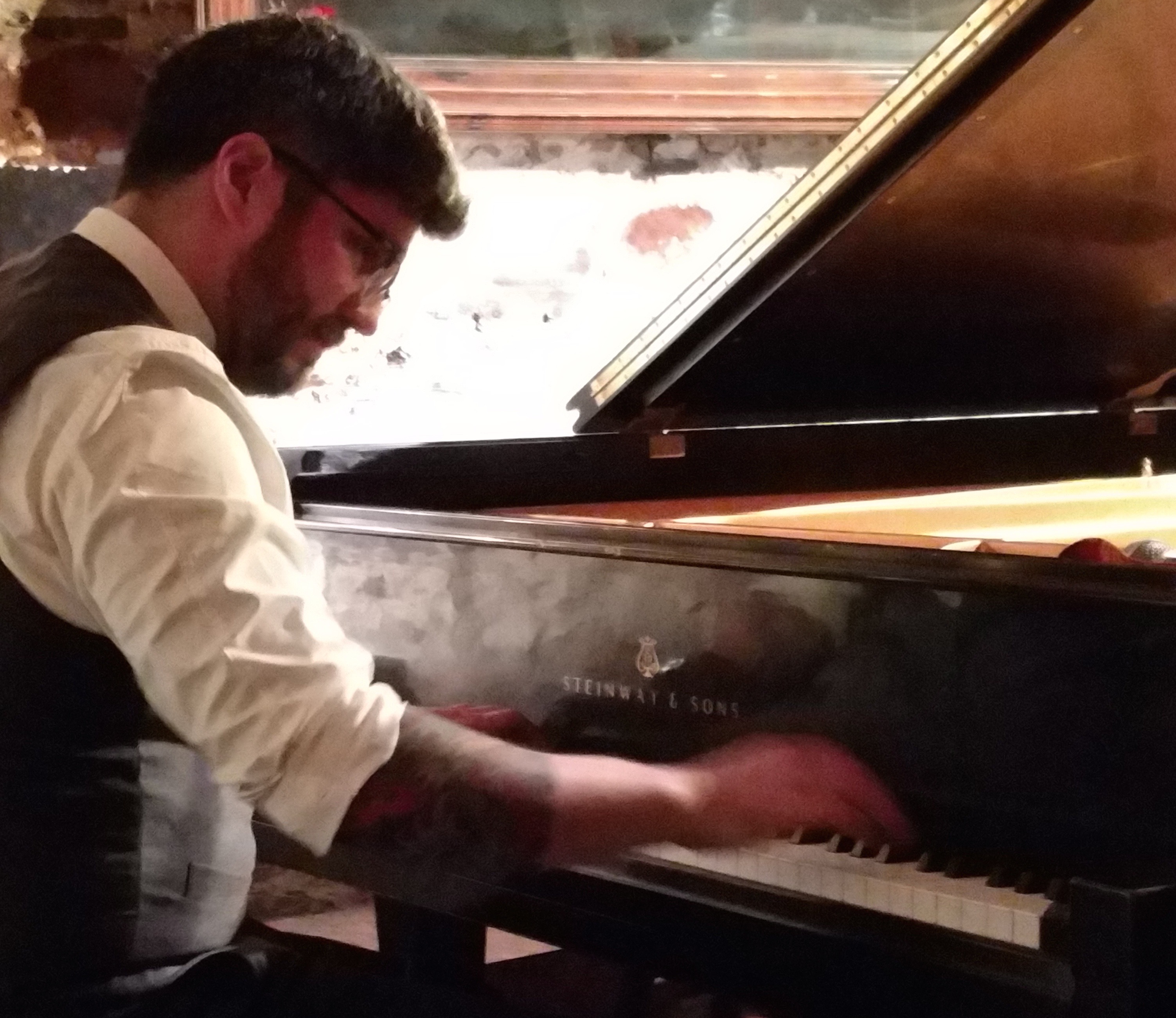The Argentine pianist Pablo Estigarribia balanced his concert last week, at Mezzrow in New York, on a tripod of genres. Trained, at first, in classical, he came, at age twenty or so, to tango, a course that he has followed for the past decade. He has studied and played with top tango figures and found in solo piano his own calling: Tangos para concierto, an effort to bring tango to the concert hall while retaining its essential character. Mezzrow is, however, neither a classical nor a tango space, but a jazz club.
Estigarribia didn’t fight the ambiance, but let it frame his playing. He prefaced the tango “Flores negras” with the observation that its composer, Julio de Caro, had been one of the first to import elements of jazz into the genre. His banter, throughout the concert, inflected how the music was heard and thought about. He pointed out that jazz is improvisational and tango arranged; that classical scores are (generally) extant while tango’s are (in part) transmitted orally. His project Tangos para concierto addresses, in concerts, a book, and a CD (which won the Gardel Prize in 2015), the latter tension, with note-by-note versions of new and historical tangos for solo piano. That the setting at Mezzrow also put jazz at the back of our minds affected what we made of the sound, helping to define for the ear what makes tango, tango.
Classical elicits, jazz surprises, tango insists. These are generalizations, but useful, especially if, as they did at Mezzrow, they help you listen. Estigarribia has a good deal of classical delicacy, but he knows that solicitousness must defer to insistence. Tango is a musical drama that commences with the compulsion of the downbeat. It has no problem resolving lightly, and often does – the musical opposite of the speech coach who says never to drop the voice at the end of a sentence, or the teacher who forbids ending essays with a question. The beat in tango, once established, is unthreatened. Estigarribia points out that the lack of a percussion section in tango puts certain effects on the piano and the double bass. The piano in tango needs, by its nature, to be a little shameless, solo all the more so.
Estigarribia inclines, when he prefaces a number with commentary, to the personal touch. Juan Carlos Cobián, who composed “La casita de mis viejos”, and Carlos Di Sarli, composer of “Milonguero Viejo”, he calls by their nicknames, “The Aristocrat of Tango” and “The Gentleman of Tango”. (Bowtied and elegant, with the casual edge that makes for true dapperness, Estigarribia could use a nickname himself.) He introduces his own compositions with references to personal experiences. “Cochabamba”, a tango waltz (vals criollo) was named after a Buenos Aires milonga (tango club) that he admires for its community spirit and outreach to young people. “Primavera en Tokio” is a musical appreciation of Japan written after a concert tour there (it ends with a charming coda that, to the Western ear, evokes Japan instantly). To “Gringuita,” on the theme of an Argentine man who falls for a blond foreigner, he adds the disclaimer that any resemblance to actual persons is purely coincidental.
Seeing Estigarribia would be a good introduction for one who doesn’t know tango while expanding the sense of it for those who do. In two sets he traverses the history of tango up to and beyond Piazzolla. Horacio Salgán, an essential stop on a piano tour of the genre, is represented, so are the sister genres of vals and milonga, and folkloric ones that are part of the landscape, zamba and malambo. This musically engrossing, personable, and intellectually canny show tours the U.S. through May 27.
For more on Pablo Estigarribia, including tour dates and locations, click here. Visit Mezzrow for upcoming events at that venue.

One response to “Pablo Estigarribia”
[…] and Horacio Cabarcos (double bass), joined by the singer Alicia Vignola. As playful and precise as when I saw him last month in New York, he brought the student orchestra to a full swell and, with the trio, gave the festival its most […]